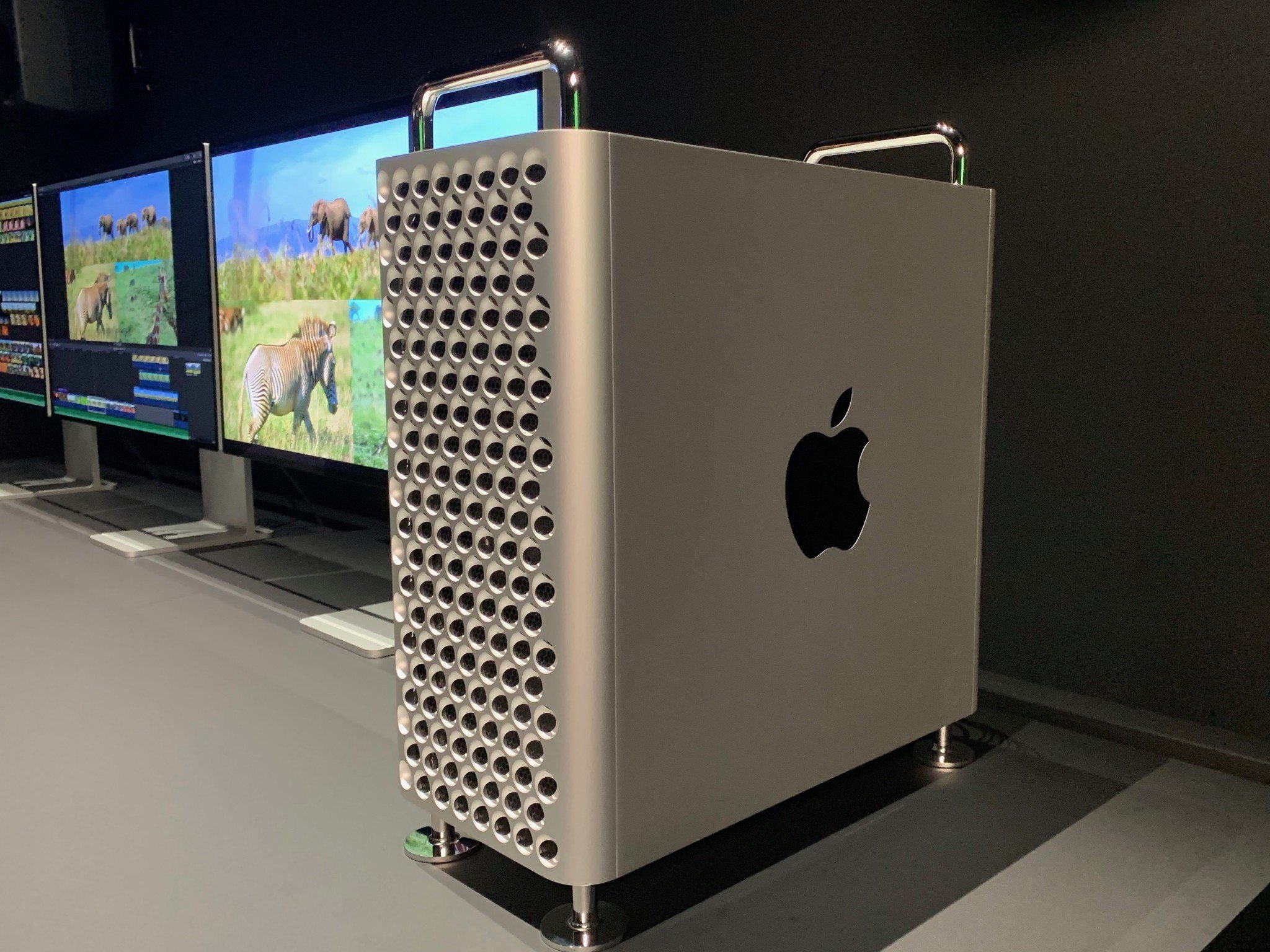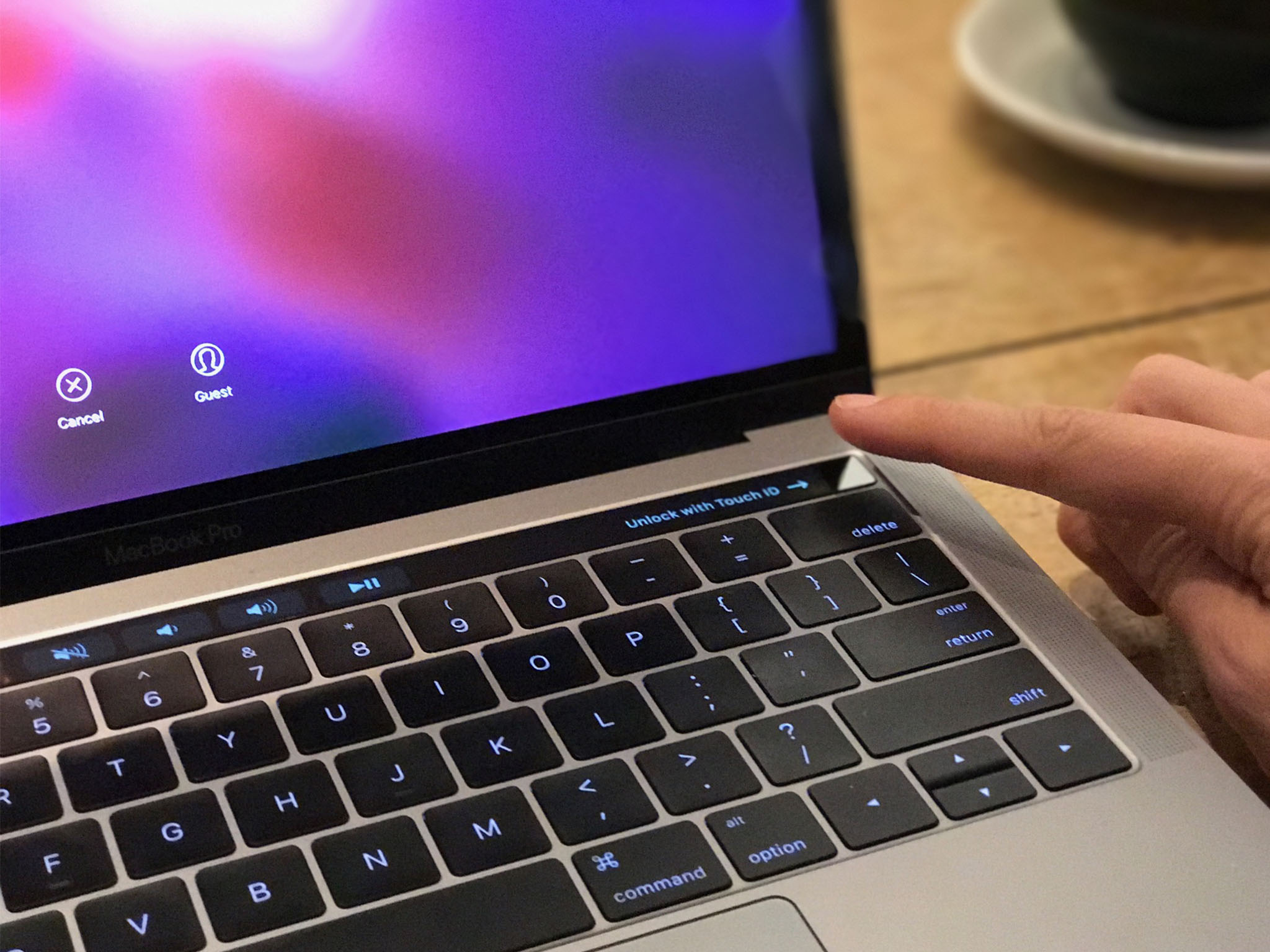Apple Silicon Mac Pro: How M1 will scale off the charts

The Apple Silicon Mac Pro. Yeah, the… Raid Boss of Apple's new M-series of Macintosh computers. The biggest, the best, the baddest, the most expensive, and almost certainly the last of Apple's chipset transition. So… how will an iPad-based system-on-a-chip scale all the way up to what's currently a modular, massively multicore Xeon and AMD graphics card capable monster?
Design
About the only rumor that we've heard when it comes to the Apple silicon Mac Pro is that… it's going to be shorter.
Specifically, that it looks like the current design but about half the size. Mark's not sure if it will replace the current Mac Pro, the way the M1 MacBook Air just replaced the Intel MacBook Air, or slot in alongside it, the way the silver M1 Mac mini created a new, lower-end tier beneath the existing space gray Intel mini. That the increased power efficiency of the M-series could lead to the reduction in size, but that the current Pro has that size because of all the expansion options it provides.
Now, some of that current size is taken up by the honking big Intel Xeon processor. Up to 28 cores of it. And the AMD Radeon Vega Pro II graphics cards. Up to two of them. In MPX modules.
So, first, that should give anyone and everyone just murder-hornets-level terrified that Apple will use M-series as an excuse to go back to the trashcan Mac, reason to just… relax about it already.
Second, depending on how exactly Apple replaces all those Xeon cores, and maybe those graphics cards, that could free up some space in the bottom to take some size right off the top.
And, of course, it also makes the kind of sense that does, given the investment Apple literally just made in Industrial Design for the current Mac Pro.
iMore offers spot-on advice and guidance from our team of experts, with decades of Apple device experience to lean on. Learn more with iMore!
I mean, they went from the original translucent plastic to the cheese grater basically eons ago in computer time and stuck with the trash can just way past its prime. It's really, really, really hard to see them moving on from cheese grater 2 — grate harder any time soon.
Silicon
Smaller Mac Pro aide, the bigger question is just how exactly Apple's going to power it?
We've already seen the answer on the lowest end, lowest power side — how Apple is replacing Intel's CoreM Y-Series chipsets on the MacBook Air and, like i5 U-Series on the most Air-like MacBook Pro and new silver Mac mini — basically all the integrated graphics stuff. With a chipset that's like a superset of an A14X — 4 efficiency cores, 4 performance cores, 7 or 8 graphics cores, 16 neural engine cores, and more accelerators, controllers, and otherwise custom silicon that you can throw a fab at.
Rumors for the next step up, what Apple will use to replace the higher end i7, i9, and discreet-graphics MacBooks Pro, space gray Mac mini, and some or all of the iMacs, are literally more of the same. 4 eCores and 12 pCores more of the same. Maybe, hopefully, more graphics cores too.
Basically, take Apple's Senior Vice President of Hardware Technologies, Johny Srouji's, graph and follow the curve up from that 10-watt line to maybe past the 30-watt line.
Way more performance but still way more performance efficiency.
There have been rumors of an M1T as well, something that would go into the higher-end iMacs, though whether it's just again more cores… like 16 or who knows…? I mean, who knows?
But the Xeons… the Xeons in the iMac Pro and, more specific to this video, the Mac Pro?
Those aren't just massively multi-core, though they are, but they're designed to support more workstation, more enterprise-specific features like higher amounts of memory, also error-correcting ECC memory, and just the general kind of robustness, resiliency, and redundancy you need in really pro-pro settings.
And they don't usually care a wit about more consumer-friendly features like faster single-core frequencies or integrated graphics because they're busy doing multiple heavy workloads, often headless and in a rack or production cart being.
Johny Srouji did announce a family of SoC, of systems on a chip, but the question remains just how big the biggest member of that family can get. At least right now, for generation first.
Would it just be throwing 24 or more pCores at the problem? Is there any world where multiple SoC make more sense?

And would Apple want or need to use discrete GPUs? Either because maintaining GPU on the package constrains them from scaling to the degree necessary, at least for now, or the Mac Pro simply demands the ability to do it off-package — to make Graphics modular. Even if that's no longer AMD and whatever comes after Big Navi… Not bigger NAVI but Navi 3… and Apple is spinning their own dGPU boards.
There's been some speculation that Apple might do for graphics what they did for drivers, move them out of kernel space and into user land extensions — if that's even necessary — and then use the same kinds of MPX architecture to let you snap in more graphics power, and upgrade it over time.
Apple added 2 thunderbolt controllers to the system on a chip for M1. It stands to reason they'll add more for M1X or whatever, and however, they scale that up. So it's not difficult to imagine they could surface the underlying PCIe lanes for MPX modules and other expansion. Maybe ASIC like the afterburner card they are currently offering to accelerate ProRes performance.
Maybe it could even form the foundation of a new generation of eGPU for MacBooks and the Mac mini as well. I mean, as long as I'm writing fanfic.
How all that ties into or works with unified memory on the SoC, I don't know. It could just not, it could be ugly, or it could be something really clever.
Maybe for memory as well… assuming the can't — and just plain shouldn't — keep up to 1.5 terabytes of it on-package for something like a modular Mac Pro.
If Apple could figure that out — a way to make that 6K case super SoC powerful by itself, but considerably more extensible with a plug-in architecture, then that very well may be the best of both worlds.
A revolution without compromise.
Security

The T2 co-processor in current Intel Macs is gone. DED. RIP. Because that was basically a variant of the A10 processor anyway, just working around all the things Intel couldn't handle, or Apple just didn't want them handling.
Now all of those IP blocks are integrated — and updated to the latest A-series — in the M-series.
And, while sure, that means Touch ID is still there for the MacBooks… it leaves biometrics still up in the air for the Mac Pro.
Because you want the Touch ID sensor physically connected to the Secure Enclave, Apple has only included it on keyboards physically connected to the T2 or now M1 chip that houses the enclave.
Putting it in something like the Magic Keyboard probably means having to put at last a T1 or T2 chip in there as well — and S2 Apple Watch or A10 iPhone equivalent chip in there as well — just to handle Touch ID authentication. Which would make for an expensive keyboard. I mean, probably not iPad Magic Keyboard expensive… and it would be for a Mac Pro… so I kind of just hope Apple does that.
Also, Face ID in an updated Pro Display XDR. Because, unlike the MacBooks and iMacs, the Mac Pro won't have a built-in camera above the display — or, you know… a display — and a T1 or T2 shoved into a Pro Display XDR would basically be a nickel in a bag of silver dollars at this point.
Especially considering Touch ID launched in 2012 and Face ID in 2017, and it's just long past time Apple's basic biometrics came to their more advanced computer systems.
Pricing
Would any of this, from far, far less expensive Apple Silicon relative to Intel and AMD, and a smaller case because of the higher efficiencies, would any of this lead to lower prices for the Mac Pro… of bringing it back down from the mid thousands to the… lower-mid-thousands of the previous models?
I hope so, though Apple does like to pay down new technologies pretty much as soon as they launch, and, especially at the high end, to use extra budget not to drop prices but to add more advanced technologies.
In other words, Apple has said it will take up to two years to complete the switch from intel to M-series custom silicon in the Mac, specifically for the Mac Pro, and while they may get it done in one year like the previous transition, you may want to start saving now.

Rene Ritchie is one of the most respected Apple analysts in the business, reaching a combined audience of over 40 million readers a month. His YouTube channel, Vector, has over 90 thousand subscribers and 14 million views and his podcasts, including Debug, have been downloaded over 20 million times. He also regularly co-hosts MacBreak Weekly for the TWiT network and co-hosted CES Live! and Talk Mobile. Based in Montreal, Rene is a former director of product marketing, web developer, and graphic designer. He's authored several books and appeared on numerous television and radio segments to discuss Apple and the technology industry. When not working, he likes to cook, grapple, and spend time with his friends and family.
